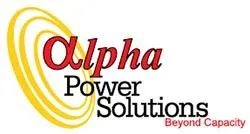
Power Factor in Solar Systems: How to Boost Your Return on Investment
As businesses increasingly seek to reduce operational costs and embrace sustainable energy solutions, solar power installations have become a popular choice. However, many business owners are unaware of the substantial benefits of integrating power factor correction (PFC) with their solar systems. Contrary to the misconception that these technologies are mutually exclusive, they actually complement each other remarkably well. By understanding and leveraging the synergy between PFC and solar power, businesses can enhance energy efficiency, reduce utility costs, and achieve a faster return on investment (ROI).
Understanding Power Factor: The Basics
Before exploring how PFC and solar systems work together, it’s crucial to grasp the concept of power factor and its significance in electrical systems.
What Is Power Factor?
Power factor is a measure of how effectively electrical power is converted into useful work output. It is defined as the ratio of active power (measured in kilowatts, kW) to apparent power (measured in kilovolt-amperes, kVA). A power factor of 1 (or 100%) indicates that all the power supplied is being used efficiently. However, in many industrial and commercial settings, the power factor is often less than 1 due to inductive loads such as motors, transformers, and fluorescent lighting.
The Impact of a Low Power Factor
A low power factor means your facility is not utilizing electrical power efficiently. This inefficiency can lead to several issues:
Increased Utility Charges: Utility companies may impose penalties or higher charges on businesses with a poor power factor to compensate for the additional strain on the electrical grid.
Reduced System Capacity: A low power factor increases the current flow in your electrical system, potentially limiting the capacity to add new equipment without costly upgrades.
Higher Energy Losses: Excessive current results in increased energy losses due to heat dissipation in conductors and transformers, reducing overall system efficiency.
Recognizing and addressing a low power factor is essential for optimizing your facility’s electrical performance and reducing costs.
How Power Factor Correction Works
Power factor correction involves the installation of capacitors or PFC equipment that counteracts the effects of inductive loads. By introducing capacitive elements, the reactive power demand is reduced, improving the power factor towards unity (1).
Benefits of Power Factor Correction
Implementing PFC in your facility offers several tangible benefits:
Cost Savings: Reduces demand charges and eliminates penalties associated with a low power factor on your electricity bill.
Increased Capacity: Frees up capacity in your electrical system, allowing for the addition of new machinery or expansion without significant infrastructure upgrades.
Enhanced Equipment Lifespan: Decreases the electrical stress on cables and equipment, potentially extending their operational life.
By correcting the power factor, businesses can improve energy efficiency and realize significant cost savings.
The Limitations of Solar Power Systems Alone
While solar power systems are effective in generating clean, renewable energy, they primarily supply active power but are not as efficient in generating reactive power.
Active Power vs. Reactive Power
Active Power (kW): The actual power that performs useful work, such as running motors or lighting.
Reactive Power (kVAR): Power that is, necessary for creating magnetic fields in inductive equipment such as motors to enable them to perform useful work.
Solar panels generate active power, reducing the amount of active power drawn from the grid. However, the reactive power demand remains, as solar inverters typically do not supply significant reactive power and if they do, they do it inefficiently, compared to other technologies .
Consequences of Ignoring Reactive Power
Without addressing the reactive power component:
Worsened Power Factor: Since the active power drawn from the grid decreases while reactive power remains unchanged, the power factor deteriorates.
Inefficiencies and Costs: A poor power factor can lead to inefficiencies and increased costs due to higher current draw and potential utility penalties.
Relying solely on solar systems without considering reactive power needs can, therefore, have unintended negative effects on your facility’s electrical performance.
The Synergy of Combining PFC with Solar Systems
Integrating power factor correction with solar installations creates a comprehensive energy solution that addresses both active and reactive power needs, leading to enhanced efficiency and cost savings.
Accelerated Return on Investment
One of the significant advantages of combining these technologies is the improvement in ROI:
Quick Payback on PFC: Power factor correction equipment typically pays for itself within 6 to 18 months due to immediate reductions in utility charges.
Enhanced Solar Investment: The savings generated from PFC can be used to offset the longer payback period of solar installations, which can range from 3 to 8 years.
This combined approach accelerates the overall ROI of your energy investments.
Optimized Energy Efficiency
By addressing both active and reactive power:
Efficient Use of Solar Power: The solar system can focus on supplying active power without the burden of reactive power demands.
Reduced Inverter Stress: Solar inverters are not required to handle reactive power, which can improve their efficiency and longevity.
Lowered Demand Charges: Improved power factor reduces the apparent power (kVA) drawn from the grid, leading to lower demand charges.
The result is a more efficient electrical system with reduced operational costs.
Special Considerations for Off-Grid and Battery-Backed Systems
For businesses utilizing off-grid solar systems or those with battery storage, integrating PFC becomes even more beneficial.
Extending Battery Life and Efficiency
Reduced Battery Drain: Generating reactive power through inverters can rapidly deplete battery reserves. PFC equipment supplies reactive power more efficiently, conserving battery life.
Enhanced System Reliability: By managing reactive power effectively, the system experiences fewer voltage fluctuations, leading to more stable operations.
Designing for Off-Grid Success
Careful design and integration are necessary to ensure that PFC and solar systems work harmoniously in off-grid scenarios. This includes selecting appropriate equipment and settings to prevent conflicts between the systems.
Important Factors in System Integration
When integrating PFC with solar installations, especially those connected to the grid, certain factors must be considered to ensure optimal performance.
Use of Modern, Four-Quadrant Controllers
Bidirectional Power Flow Management: Modern controllers can accurately measure and compensate for power flow in both directions, which is essential in systems that feed power back to the grid.
Avoiding Operational Issues: Antiquated controllers may not handle bidirectional power flow effectively, leading to incorrect compensation and potential system malfunctions.
Correct Installation Practices
Proper Placement of Current Sensors: Ensuring that current transformers (CTs) are installed correctly is vital for accurate measurement and effective power factor correction.
Professional Installation: Engaging qualified professionals for system design and installation minimizes the risk of errors that could compromise system performance.
Attention to these details is crucial for maximizing the benefits of combining PFC with solar systems.
Maximizing Savings and Sustainability
The integration of power factor correction with solar power contributes to both economic and environmental goals.
Economic Advantages
Implementing both technologies leads to:
Reduced Utility Bills: Lower energy consumption and demand charges translate directly into cost savings.
Avoidance of Penalties: Maintaining a good power factor helps avoid utility-imposed penalties.
Environmental Impact
Combining PFC with solar systems enhances sustainability by:
Increasing Energy Efficiency: Efficient use of energy resources reduces overall consumption.
Reducing Carbon Footprint: Optimizing both active and reactive power reduces the strain on the grid, contributing to environmental sustainability.
Businesses can, therefore, achieve financial savings while also supporting green initiatives.
Preparing for the Future of Energy Management
As energy demands evolve and the push for sustainability intensifies, integrating PFC with solar systems positions businesses at the forefront of energy management practices.
Staying Ahead of Regulatory Changes
Being proactive offers several benefits:
Compliance with Utility Requirements: Utilities may tighten regulations regarding power factor and energy efficiency.
Avoiding Future Costs: Implementing combined solutions now can prepare businesses for future changes, avoiding potential disruptions or additional expenses.
Scalability and Growth
A well-integrated energy system facilitates:
Facility Expansion: Improved system efficiency allows for growth without substantial electrical infrastructure upgrades.
Adoption of New Technologies: A flexible system can more readily incorporate advancements in energy technology.
Investing in comprehensive energy solutions today can provide long-term benefits and adaptability.
Empowering Your Business Through Integrated Energy Solutions
For business owners, the decision to combine power factor correction with solar installations is a strategic move towards operational excellence. This integrated approach ensures that both active and reactive power demands are met efficiently, leading to substantial cost savings, enhanced system performance, and a reduced environmental impact.
By embracing this synergy, businesses not only optimize their current energy usage but also lay a solid foundation for future advancements in energy technology.
Take the next step in energy efficiency by integrating power factor correction with your solar system. Unlock the full potential of your energy investments and pave the way for a sustainable, cost-effective future.

